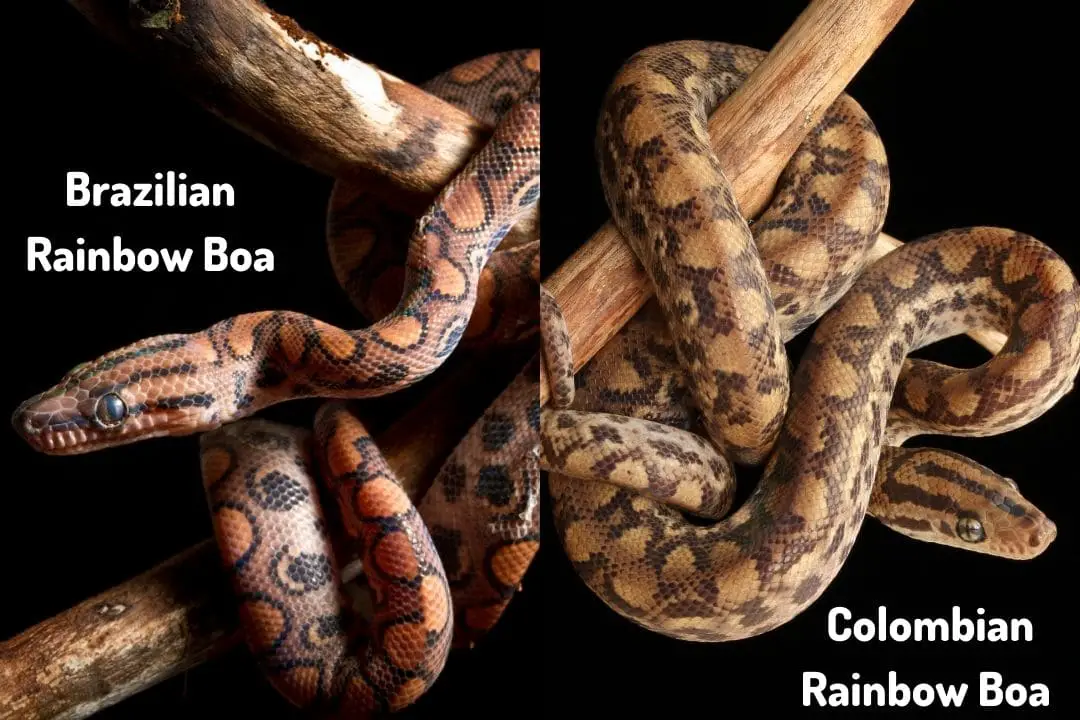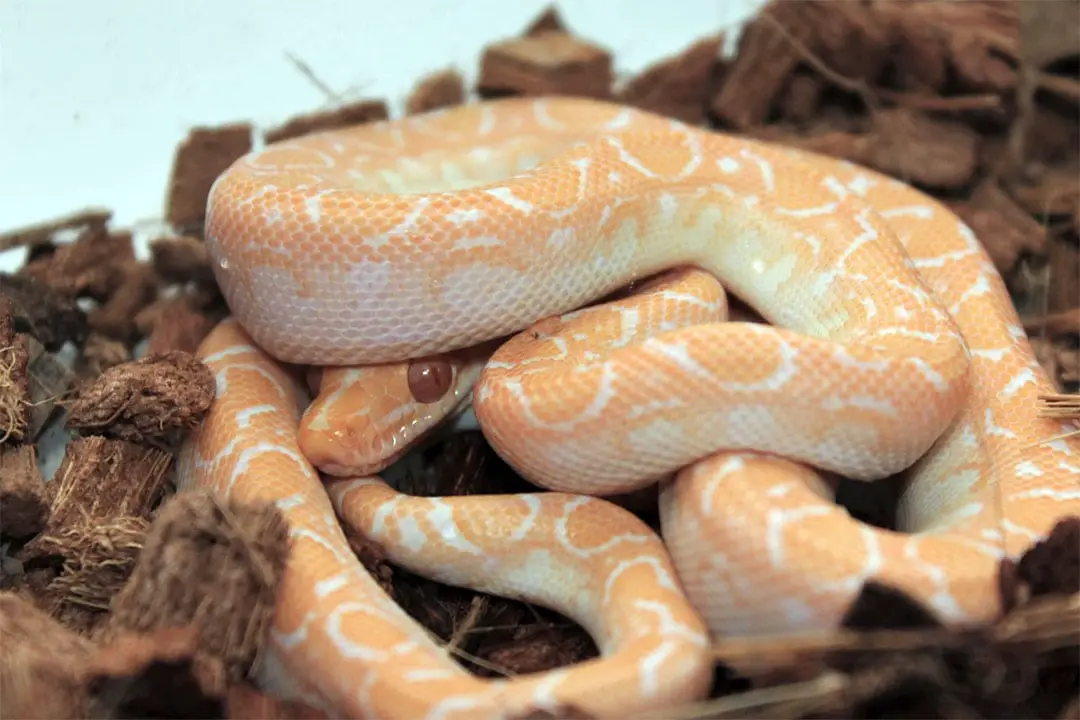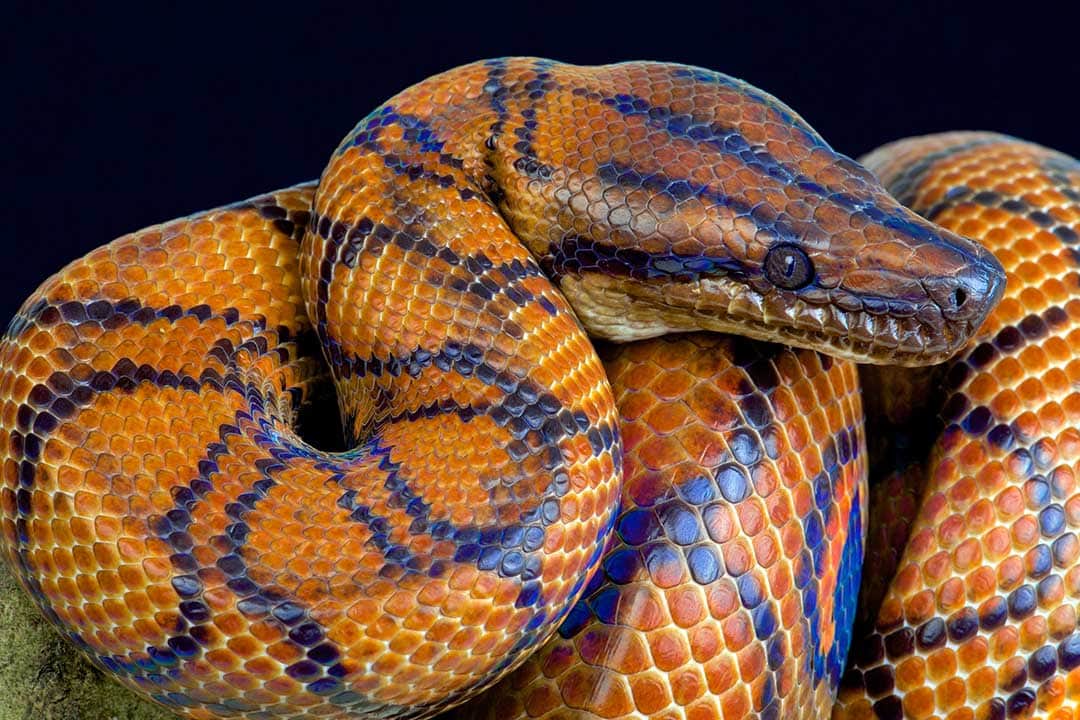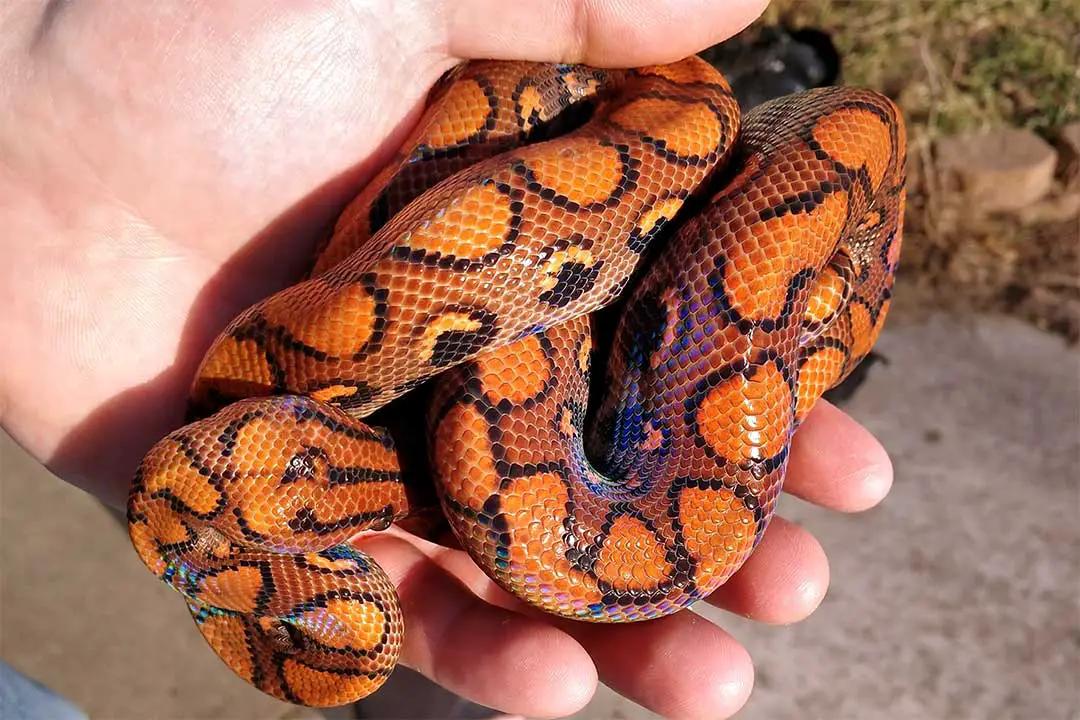Rainbow boas are very popular snakes thanks to their unique iridescent scales. These snakes are native to South America, and there are a few species that fall under the label.
Today, we will be comparing the Brazilian rainbow boa (Epicrates cenchria) to the Colombian rainbow boa (Epicrates maurus).
They are easy to mistake for one another, so we will go over the differences.
As a general rule, the Brazilian rainbow boa is much larger and more slender than the Colombian rainbow boa. Colombian rainbow boas are typically brown and have little patterning as adults, while Brazilian rainbow boas can be red or orange and have more obvious patterning.
Size
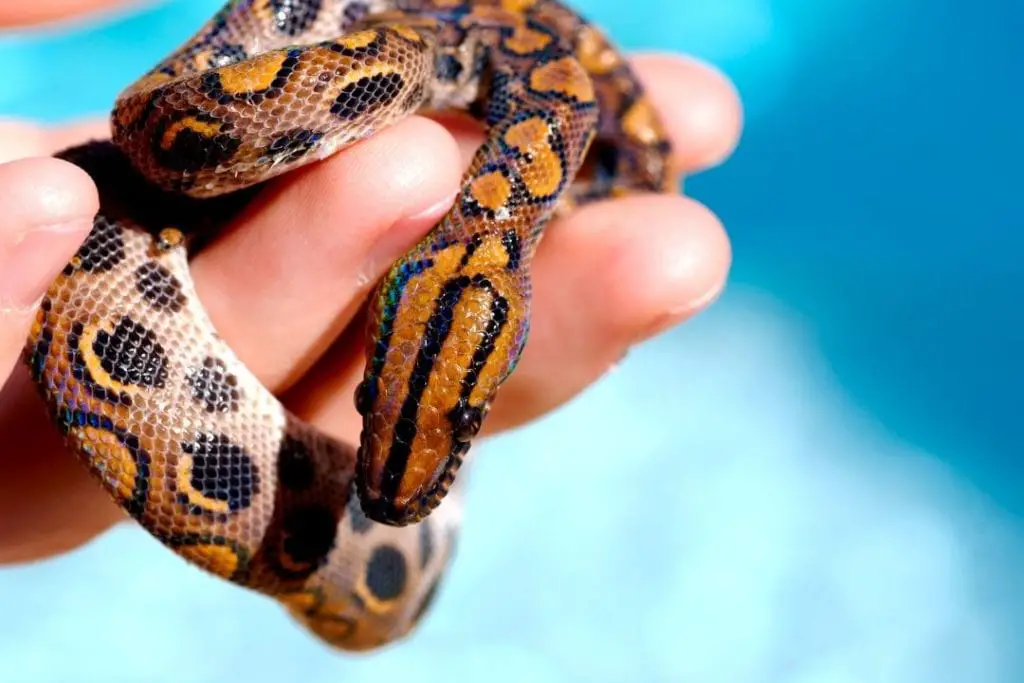
Everything you need to know about caring for Brazilian Rainbow Boas in captivity:
Read our Brazilian Rainbow Boa Care Sheet (Complete Guide)
Rainbow boa species have very different sizes. Brazilian rainbow boas are between 4 and 6 feet and fairly slender for a boa. The Colombian rainbow boa is much smaller on average.
They are between 3 and 5 feet as adults. They are somewhat thicker compared to their Brazilian counterpart. In both species, the females will be larger than the male.
If you find a very large animal, it is likely a female. Growth rates are fairly similar, though Brazilians will grow longer and stay thinner comparatively.
Many sub-adult snakes will appear very long and thin until they start bulking out as they age. Each snake also has a slightly different shape to the head.
Colors
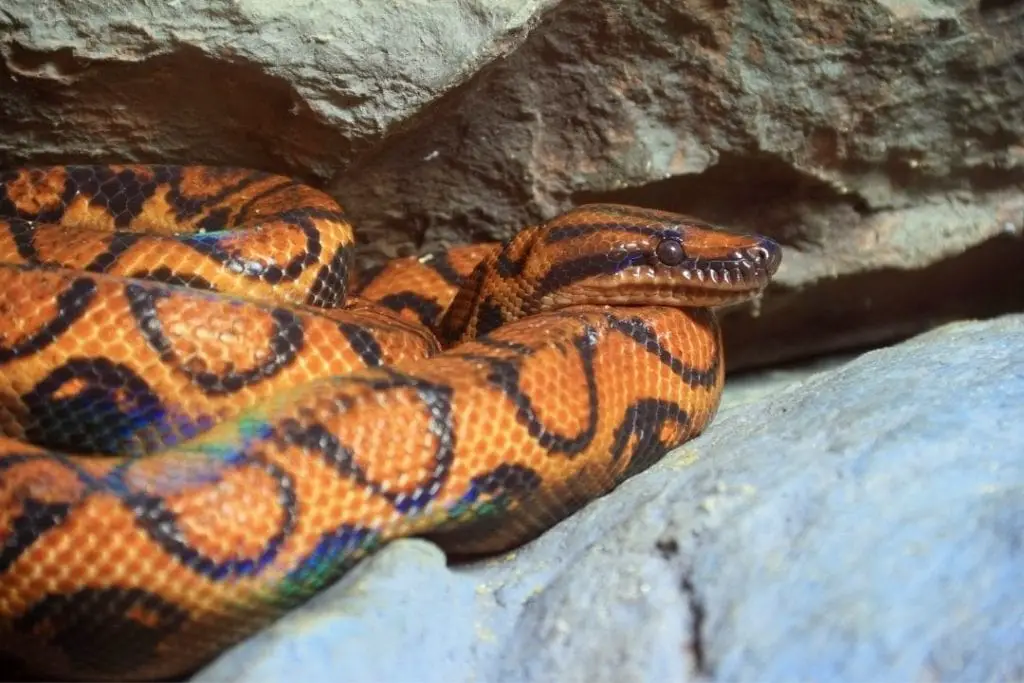
Young Colombian rainbow boas are brown with darker scales that pick out a saddle pattern over the back. As these snakes age, they stay brown but experience a fading pattern.
Many adults have little to no pattern visible. Brazilian rainbow boas can be brown, but they also come in orange and red tones. Their patterning stays dark throughout their life.
You can find unique colors in the pet trade. Some Brazilian rainbow boas have been bred to be a more intense red. Colombian rainbow boas have been selected for less patterning and even unique traits like albinism.
They can also miss certain pigments, which give the snakes unique appearances.
Care Requirements
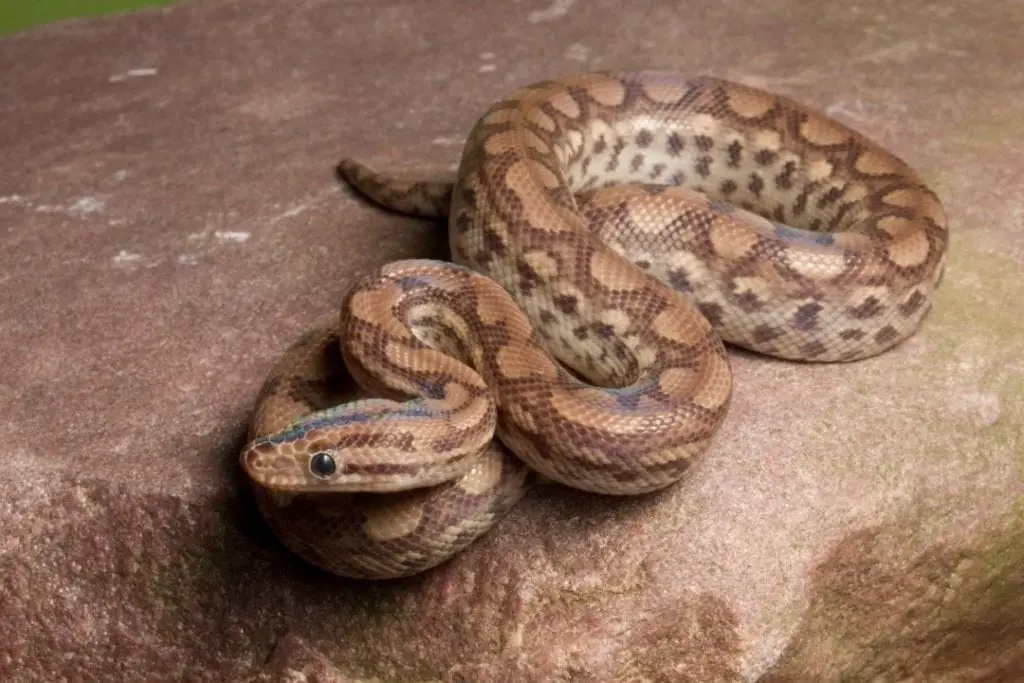
Colombian rainbow boas are noted for being more tolerant of higher temperatures and lower humidity than Brazilian rainbow boas. A Brazilian should never be allowed to get up to 90 or they will suffer for it.
They also need higher humidity levels on average. This means you need to be careful when selecting an enclosure and substrate.
Live plants may also be a good idea if your snake doesn’t crush them. Since they get larger, Brazilian rainbow boas also require much larger cages and prey items.
Colombian rainbow boas are noted for being a bit sturdier throughout their lives. They are not as sensitive to off conditions as young Brazilian rainbow boas.
Most experienced owners recommend trying to find yearling Brazilians so you have an easier time caring for the snake. Hatchlings are very sensitive and need much higher humidity in general.
These are not snakes for beginners because of how hard it is to keep hatchlings healthy.
Temperament
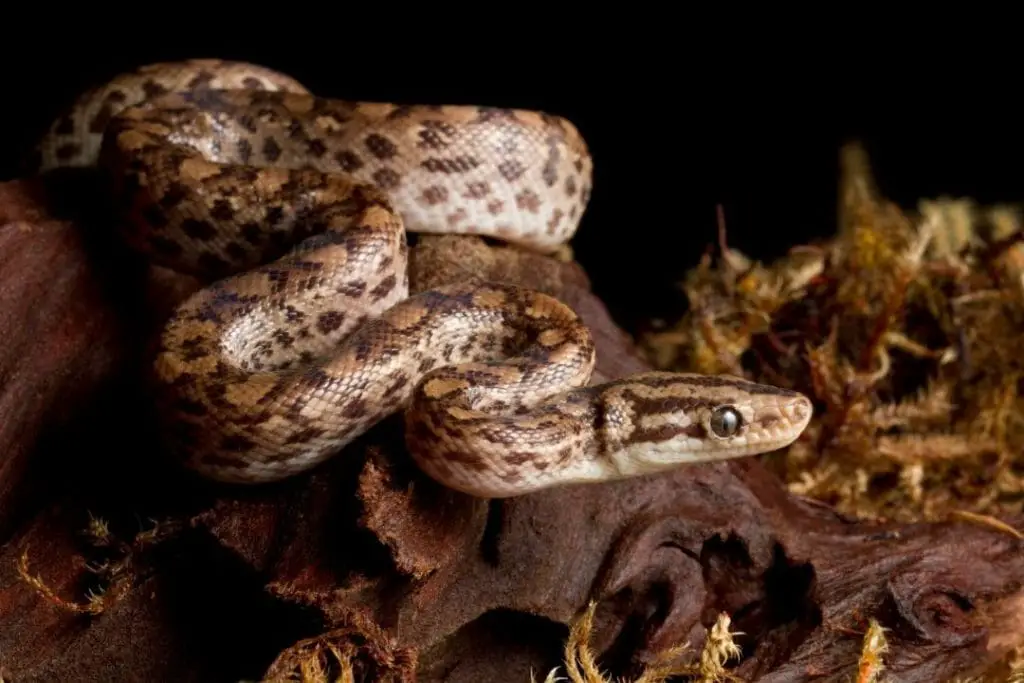
Temperament does vary slightly depending on the species. Young Brazilians are noted for being more likely to bite or snap at their owners.
Even adults may take a nip during transfer, even if they are fine once they are out of the enclosure.
Colombian rainbow boas are typically more relaxed, though all boas in captivity will nip when young or if they don’t feel secure.
As adults, both species are pretty calm and curious. Most owners love them for their gentle personalities. Captive-bred animals are typically gentler than wild-caught animals.
If your snake is very nippy or easily stressed, basic care like cleaning the cage becomes a big event for you and your pet.
Price and Availability
Both species can be found fairly easily in the pet trade. Both species breed well in captivity, so it is easy to find a pet rainbow boa.
Remember, wild-caught animals can be unhealthy and many never adapt to captivity. Brazilian rainbow boas can be more popular, depending on the region you are in.
They tend to be more expensive. You are also much less likely to find them in unique colors and patterns. Most adult animals on the market are sold because they have the possibility of producing babies with unique coloring.
You can find albino animals, animals with caramel coloring, or unique patterns.
These animals are very expensive since they are so rare. Colombian rainbow boas are cheaper and come in more colors. You can find completely patternless animals or find ones that are leucistic.
This means they are completely white typically with blue or gray eyes. You can find these animals much easier thanks to how popular they are.
Albino animals are also available, which have white and yellow bodies with pink eyes. Neither snake is particularly cheap, since they are harder to produce and require more care than popular species like corn snakes. Keep this in mind when you consider which snake to get.
Conclusion
Rainbow boa species all share a beautiful iridescent sheen, but the individual species have their own appearance and needs. Brazilian rainbow boas are larger and need more humidity.
Colombian rainbow boas are shorter, thicker, and more tolerant of temperature changes. Both snakes make good pets, though babies are nippy and more sensitive to poor conditions.
If you have any questions, please leave them below. If you have owned either or both species, please leave a comment about the differences between the species.
